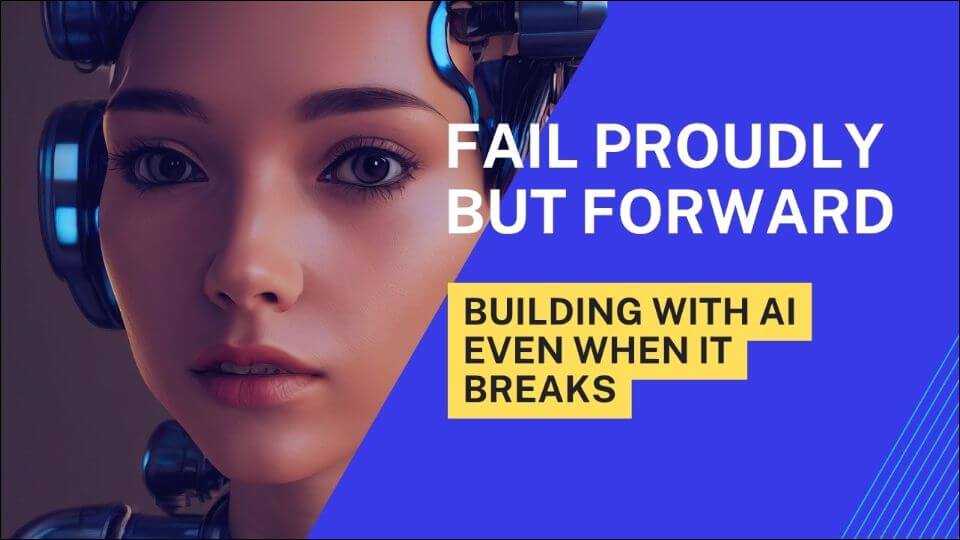In 2025, the barangay has bots. The sari-sari store has TikTok voiceovers. Local leaders use free AI to write grant proposals. On paper, we’ve “arrived.” AI is no longer some foreign fever dream—it’s in our phones, our schools, our side hustles.
But who really owns this revolution? And more importantly: are we building our own futures—or absorbing someone else’s version of progress?
☁️ 1. From Broadband to Bot: How We Got Here
The last five years saw a rapid descent into AI-powered everything. Education modules. Online “livelihood” programs. Even prayer groups use AI-generated devotionals.
At first, it felt like hope. A way to scale creativity, save time, and reduce barriers. But then came the quiet realizations:
- The AI couldn’t pronounce our names right.
- It flagged “taho,” “palengke,” and “tricycle driver” as irrelevant.
- It insisted the best way to “increase revenue” was to sell courses in dollars to Western clients—because that’s what its training data assumed success looked like.
Suddenly, progress felt… foreign.
🚧 2. Recolonization by Default: When Tech Forgets Our Realities
Here’s the painful truth: most global AI platforms are trained on Western data, values, and aesthetics. That means:
- Tagalog and Visayan get ignored or mistranslated
- Filipino humor gets misread as offensive
- “Poor” becomes a dirty word, not a context
Even platforms made “for creators” assume high-speed internet, PayPal, and flawless English. For the 70% of Filipinos without stable access or banking? That’s not empowerment—it’s exclusion.
We’re watching a new kind of recolonization unfold—not through politics, but through platform defaults.
🥊 3. Filipino Counterplays: Resisting the Defaults Quietly
Despite all this, agency is alive. And Filipino ingenuity is, as always, quiet but powerful:
- Cosplay Creators from Bacolod remix AI to enhance character storytelling—blending Visayan voice acting with image generation
- TikTok Teachers build prompt banks in Taglish for public school kids, using jokes their students actually get
- Micro Farmers document rainfall patterns using free AI transcription tools, creating their own grassroots weather archives
- Freelancers reverse-engineer platform biases to serve diaspora clients—without losing Filipino voice
These aren’t loud revolutions. They’re quiet, strategic counterplays. They refuse to flex. They choose leverage instead.
🧠 4. The Quiet Fight: Silent Systems, Not Social Validation
We’ve been exploring this idea on AIWhyLive: AI for Kita. Compounding systems. Low-profile, high-impact agency.
It’s not about going viral—it’s about building quietly. Teaching a mother to automate her tindahan records. Helping a 19-year-old Visayas coder set up whisper voice models for elders. Creating profit, privacy, and dignity without being performative.
This is not rebellion. It’s redefinition.
🫀 5. Final Thought: AI Is Not the Enemy—Absorption Is
AI isn’t evil. It’s just fast, vast, and deeply shaped by who built it. The real danger isn’t adoption—it’s absorption. Losing our tone. Our jokes. Our context. Our agency.
So the real question becomes:
Can we build AI futures where “success” sounds like us? Or will we settle for tools that automate erasure while promising growth?
You already know our answer.
✏️ Too Cryptic? Explain Like I’m 12
AI is like a super fast assistant—but most were trained outside the Philippines. So when we use them, they don’t always get our words, jokes, or problems. It’s like asking someone who grew up in Canada to help sell taho at the palengke—they’ll try their best, but it’ll be awkward.
So we have two choices:
- Use AI carefully, and teach it our way of life
- Or just copy what other people do, and hope it fits
Which sounds smarter to you?







